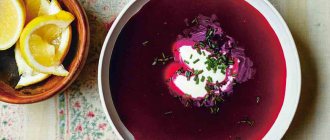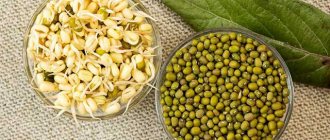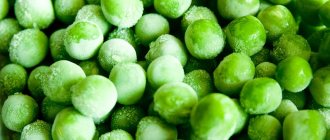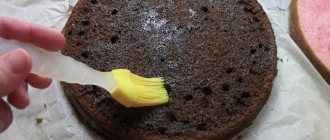Melon is a tasty and healthy product, with the only drawback - it cannot be stored for a long time. After cutting the peel, the fruit is good for consumption for 1 day. Then pathogenic microbes begin to accumulate on the pulp, and it becomes dangerous to eat. You can solve the problem of preservation by making candied melon. The sweetness is stored for months. Suitable for making desserts, compotes, filling pies, and in itself it complements tea drinking well.
How to properly prepare melon for candied fruits
To prepare this sweetness, choose fruits with hard flesh, preferably unripe ones. Otherwise, instead of appetizing pieces, you will get mashed potatoes. Wash the fruit thoroughly, remove the skin and seeds. Cut the pulp into small pieces.
Next, you can prepare candied melon in several ways.
To prepare, take: 1 kg of melon, 1.2 kg of sugar, 2 glasses of water.
Boil water, add sugar. Boil the syrup until the sugar is completely dissolved. Place melon pieces into the bubbling syrup and cook for 3 minutes.
Remove from heat and let stand for 12 hours. Do this 3-4 times.
When the pieces become transparent, place them in a colander to allow the syrup to drain completely. Then you need to dry the melon.
You will need: lemon juice - 3 tablespoons, melon 1 kg, sugar 1 kg.
Cover the melon cut into pieces with sugar, wait a couple of hours until the juice comes out.
Pour in lemon juice and put on the stove. After boiling, cook over low heat for 2 minutes, turn off. Let stand for 8-10 hours. Then repeat the steps 4-5 times. The melon is ready when it becomes translucent. Place it on a sieve and drain the syrup. Dry candied fruits using one of the methods below.
Selection and preparation of melon
For this procedure, an unripe melon with hard, dense pulp is best suited, otherwise, instead of tasty pieces, there is a risk of getting a shapeless liquid mass. There is no need to worry if the fruit suddenly turns out to be unsweetened - enough sugar will be used during the cooking process to give the delicacy the necessary taste.
Preparing the melon involves thoroughly cleaning it under running water and removing the skin and seeds. The pulp must be cut into small cubes no more than 1 cm thick.
How to dry candied melon at home
You can dry candied melon outdoors by placing the pieces in a single layer on a plate. This drying can last 3-4 days.
Place the prepared pieces of fruit on a parchment-lined baking sheet. Dry at a temperature of 70-80 degrees with the oven door slightly open for 4-5 hours.
Place pieces of candied melon into trays in a thin layer. Set the temperature to 65-70 degrees, dry for 5-6 hours.
In the video, kliviya777 will share the secrets of making candied melon
Properties of the finished product
Despite the benefits comparable to fresh melon, candied fruits have a higher calorie content per 100 grams. The nutritional value of the dessert is 319 kcal. Used/F/U ratio 0.6/0.6/52 grams.
Candied melon, the benefits and harms of which depend on the amount of dessert eaten, retain most of the valuable substances after heat treatment.
Beneficial substances contained in candied melons:
- ferric iron (easily absorbed, prevents the development of anemia, improves blood quality);
- malic acid (gives elasticity to the skin, relieves fatigue, energizes);
- carotene (improves vision, accelerates the regeneration of muscles, kidneys and liver);
- succinic acid (accelerates metabolism, removes toxins);
- vitamin C (strengthens the immune system, tones, gives energy);
- folic acid (improves metabolism, activates brain activity).
Plus, the melon delicacy helps normalize intestinal function, calm the nerves, and remove excess salt. The negative impact of candied fruits is manifested in their high calorie content. A figure-safe dosage is no more than 2-3 pieces per day.
The dried pulp retains a high sugar content. In view of this, dessert remains contraindicated for diabetics, people prone to gaining excess weight or suffering from obesity. You should not introduce melon treats into the diet of nursing women. Although melon, when consumed wisely, improves milk production, the substances it contains often become the culprits of allergies and diarrhea in newborns.
How to store candied melon
It is recommended to store sweets in a glass jar with a tight lid or in a paper bag in a cool, dry place. If stored properly, candied melon can be stored for 8-10 months.
Be sure to find time in the summer to prepare this amazing delicacy.
It is much more pleasant to then eat candied fruits made with your own hands than to buy unknown things in a store at an exorbitant price. Prepared with love, they will give you pleasure and benefit.
Calorie content of foods possible in the dish
- Cantaloupe melon – 19 kcal/100g
- Melon “collective farmer” – 28 kcal/100g
Calorie content of foods: Melon
How nice it is in the middle of winter to take out a jar of dried melon pieces and treat yourself to a natural treat in bad weather.
Dried melon is perhaps more popular than fresh melon. And this is justified: it is more convenient to eat, the product is full of flavor, dried melon is served as a dessert and used for a light snack, dried melon is also used to decorate culinary creations.
Homemade candied melon
Everyone, without exception, knows that candies, chocolates and other sweets, when consumed in excess, are not entirely healthy. But how can you protect children from excessive cravings for various goodies? We offer you an alternative option - to make candied melon at home. The delicacy will be very tender, with an amazing rich aroma and original taste.
Candied melon recipe
- medium melon – 1 piece;
- drinking water – 1 l;
- sugar – 860 g;
- lemon juice – 45 ml.
Wash the melon, cut it and remove the peel and seeds. Then cut the pulp into small cubes and dry with a paper towel. Pour half a liter of boiled water into the pan, add a little lemon juice and put the dishes on the fire. After boiling, add the carefully prepared melon and simmer for 5 minutes. Next, carefully place the contents of the pan into a colander and leave the candied fruits to drain for a while.
In a saucepan, combine the remaining filtered water with granulated sugar, mix everything thoroughly and send the dishes to the fire. Boil the syrup for 5 minutes, and then throw in the melon pieces. Cook candied fruits for 15 minutes and remove from heat. After cooling completely, cover the pan with a lid and place in the refrigerator for 12 hours. Next, return the container to the heat and, stirring, bring the mixture to a boil again. Boil the melon pieces for 15 minutes and remove from heat again. After cooling, cover the pan with a lid and put it back in the refrigerator. We repeat this procedure several more times and at the very end add the remaining lemon juice. Then pour the contents into a colander and let the syrup drain completely. Preheat the oven to 100 degrees, line a baking sheet with parchment paper and place the candied fruits on the baking sheet in one layer. Let's send the workpiece to the heated cabinet, opening the door slightly and placing it in this position. After a few minutes, turn off the heat and keep the candied fruits there until the oven cools completely. Now carefully remove the baking sheet and leave it in the room for at least 35 hours until the candied fruits are completely dry. Store the homemade delicacy in a hermetically sealed container in a cool place. You can also prepare candied melon in an electric dryer.
Read also: Cranberry kvass - recipe with photos
A simple recipe for candied melon
- melon peels – 480 g;
- crystal sugar – 170 g;
- drinking water – 55 ml.
Before making candied fruits, cut the melon in half, remove the seeds and carefully cut off the entire rind. Then we clean it from the outer colored part and cut it into shapes of arbitrary size and shape. Place the blanks in a deep bowl and set aside. Pour cold water into a small enamel saucepan, add sugar and boil the liquid until all the crystals are completely dissolved. Pour boiling sweet syrup over the melon, mix everything thoroughly so that the syrup is evenly distributed, and leave the delicacy for 12 hours. Next, carefully pour the liquid into a saucepan, bring it back to a boil and put it back into the bowl with the melon. We repeat the procedure several times, and then strain the syrup and place the crusts in one row on a baking sheet lined with baking paper. Let's dry the healthy melon sweets in a slightly open preheated oven at 65 degrees. The finished candies will be a little sticky, but this feeling will disappear after cooling. For long-term storage, candied melon peels must be thoroughly sprinkled on all sides with powdered sugar and placed tightly in a glass jar. Remember that such a delicacy cannot be stored in a damp room, as it will quickly deteriorate, having absorbed all the moisture from the air.
Step-by-step preparation
Step 1:
It is better to take one of the varieties of melon for drying: collective farmer, torpedo, pineapple, gulabi. These melons differ from others in their firm flesh and aroma. And you need to dry the melons that have hard flesh. In addition, the fruits should not be damaged or rotten. Wash the melon thoroughly. The crust, subcrust and seeds must be removed. Cut the pulp into slices no more than 0.5 centimeters thick.
Step 2:
You can cut the melon into strips, slices or pieces. Depends on how the melon will be dried and stored. Dry the melon pieces on a paper towel so that the juice is absorbed into the paper. You can dry melon in the fresh air. Then the melon needs to be cut into slices in order to pull the thread through them. But this is a rather long and troublesome process. In modern conditions, it is easier to use electrical appliances, for example, an electric dryer or an oven.
Step 3:
In an electric dryer, place the melon cut into pieces on racks, leaving space between them, and dry at a temperature of 75 degrees for about a day. But you need to dry the melon, taking breaks, checking the condition of the melon and periodically turning the pieces over. An electric dryer may not be as popular as an oven, which most likely is in every home, and in which many housewives dry fruits, berries and vegetables for the winter.
Step 4:
Place the melon pieces on a parchment-lined rack, leaving space between them. Turn on the oven at 60 degrees; if there is a fan, it is better to dry it by turning it on.
Step 5:
Leave the melon in the oven for five hours. Then turn off the oven, open the door slightly, and leave the melon inside overnight. In the morning, set the temperature to 75 degrees, dry the melon for about two more hours. Turn it off again and open the door. Leave the melon for a couple of hours. We repeat the procedure three or four more times, looking at the appearance of the product.
Step 6:
The dried melon slices should be elastic, soft, sticky, and light brown in color. Pieces of dried melon can be stored in a glass container in a dry place or braided from the strips, wrapped in cling film and stored in the refrigerator. Bon appetit!
Add photo reports and get cash prizes!Add recipes and get cash prizes!
Candied melon at home - basic technological principles
To avoid mistakes and annoying misunderstandings during the preparation process, you need to carefully study the technology of industrial preparation of candied fruits, as applied to home conditions, and understand a little about the biochemical properties of the fruit, in particular melon. In a word, it should be no worse, but better, than in the store. The main thing is to understand how this happens at the molecular level. Don't be afraid, it's not difficult.
Candied fruits are dried fruits glazed in sugar. More precisely, drying is the last stage of their preparation. First, fruits or vegetables are boiled in sugar syrup, gradually increasing its concentration. This is done in order to reduce the content of cell sap of the fruit to a minimum content. How it works?
Sugar syrup is a denser liquid mass than juice. Therefore, during heating, it penetrates inside the fruit, displacing the juice. The process of replacing fruit juice with a thicker mass containing a minimal amount of liquid occurs. In addition, after cooling, the sugar crystallizes again, and the fruit pieces become denser. This whole process is nothing more than cooking jam, but at an initial stage.
Read also: Adjika in a slow cooker: classic recipe, Multicooker
Unlike melon jam, in which the pieces are stored in syrup, future candied fruits are removed from it, dried, and then again immersed in syrup, even thicker than when first boiled. The replacement process occurs again, and again drying occurs.
Important:
Prepared pieces of fruit should be dipped into boiling syrup. Therefore, the melon must first be blanched and cooled. The juice boils faster than the syrup, and boiling juice prevents the syrup from penetrating into the intercellular space of the fetus. For the same reason, the process of cooking fruits in syrup must be interrupted several times, each time immersing the cooled slices in a thicker syrup.
Blanching the fruit is necessary in order to maintain the integrity of the fruit. In this case, part of the fruit juice passes into water, and the fiber becomes denser, changing its structure; At the same time, during the blanching process, the intercellular space expands, which makes it easier for the boiling syrup to get inside. Blanching time is 4-6 minutes. Under production conditions, burnt alum is added to the blanching water. This technique can be used at home, but not for melons and citrus fruits: these fruits are blanched in plain water.
It is difficult to count how many times you need to boil and dry. Everyone chooses fruits at their own discretion, and they have different degrees of ripeness, density, and everyone cuts fruits differently (large or small). Even the variety matters when processing fruits, because the fiber structure of each variety is usually different. Therefore, the question of how many times you need to boil and dry candied melon at home must be decided individually, and you need to focus on the remaining moisture, which should be no more than 20%. True, you shouldn’t dry out the fruit too much either.
If you want candied melons at home to be as bright as those on the supermarket shelves, you can always color them yourself, but using natural food colors: currant juice, beets, carrots, strawberries, spinach, blueberries, saffron or turmeric powder (Indian saffron). Simply add these ingredients to the syrup when cooking. You can add flavor to candied melon at home using spicy spices and fruit extracts.
There is no doubt about the benefits of such candied fruits. Just don’t get carried away - consuming a lot of sugar is harmful, but otherwise candied fruits retain all the beneficial properties of the fruits from which they are prepared.
Description
Candied melon is pieces of melon pulp boiled in rich sugar syrup and dried.
Melon is one of the most popular melon crops in the East, Central Asia and Europe. Moreover, humanity learned about the beneficial properties of this juicy sweet fruit a long time ago. In Ancient Egypt, melon was even considered sacred and was offered as a gift to the gods.
We are used to eating melon fresh, because in itself it is very tasty. But, unfortunately, this fruit quickly deteriorates. In order to preserve the melon longer and make it available at any time of the year, candied fruits began to be prepared from its pulp, which are candied slices of bright yellow color, sweet in taste and very aromatic.
This delicacy was loved by many and became quite popular. What’s especially nice is that the best properties of the melon were “inherited” by its candied fruits, making them not only tasty, but also healthy.
Beneficial features
The beneficial properties of candied melon are similar to those of the fresh fruit, but less pronounced, because as a result of heat treatment, many of the healing components of the composition were lost. Fortunately, melon is so rich in useful substances that its candied fruits, in spite of everything, also exhibit medicinal properties.
Candied melon contains the entire group of B vitamins, due to which they have a beneficial effect on the nervous system. The vitamin C preserved in them strengthens the walls of blood vessels and capillaries, and vitamins A (beta-carotene) and E effectively fight free radicals and rejuvenate the body.
In addition, candied melon contains four valuable acids: succinic, malic, citric and folic. They help strengthen nerves, tone the cardiovascular system and maintain immunity.
Of the micro- and macroelements, candied melons are rich in calcium, iron, fluorine, magnesium, potassium, copper, zinc, manganese, sulfur, cobalt, iodine and phosphorus. So these delicious candied fruits can easily replace an entire vitamin and mineral complex. But you still shouldn’t abuse them, otherwise you can achieve the opposite effect to the desired one.
Use in cooking
The use of candied melon in cooking usually comes down to using it in its pure form instead of sweets and any other sweets, to which candied fruits are not inferior in taste, but are significantly superior in benefits to the body. Therefore, this delicacy is especially recommended for children as a dessert. And for adults, candied melon can be a satisfying and healthy snack between main meals. They can also be eaten as a snack with coffee or tea.
Candied melon is often added to baked goods and sweet dishes. They go especially well with fermented milk products. For example, from cottage cheese and candied melon you can make an incredibly tasty and healthy dessert that will delight both kids and adults.
Benefits of candied melon and treatment
The benefits of candied melon are due to the unique composition of this fruit, which retains its beneficial properties even when exposed to high temperatures, and is therefore used in the treatment and prevention of common diseases.
For example, melon and products made from it are useful for diseases of the cardiovascular system, because they help strengthen the walls of blood vessels and cleanse them of harmful deposits. It is no coincidence that this fruit is used to treat atherosclerosis.
Candied melon has a beneficial effect on the kidneys, bladder and ureters.
The antioxidants contained in this product free the body from free radicals, protect and rejuvenate it. The positive effect is especially pronounced on the condition of the skin, as well as nails and hair.
Candied melon will be very useful for those suffering from anemia.
And during an attack of rheumatism, they will help reduce pain.
Due to the presence of plant fiber, candied melon improves digestion and removes waste, toxins and breakdown products from the body.
They have a positive effect on brain function, relieving tension.
Candied melon is a preventative against pneumonia.
They are also an effective antidepressant that improves mood and increases performance.
Harm of candied melon and contraindications
The harm of candied melons is minimal, and there are practically no contraindications to their use. But still they exist.
First of all, melon and its candied fruits are contraindicated for people who are allergic to beta-carotene, since this fruit contains it in large quantities.
Candied melons are very high in calories (319 kcal per 100 g of product), and therefore their consumption should be limited to those who are watching their weight.
Like any candied fruit, candied melon should not be consumed by diabetics.
It is also contraindicated for those who have an individual intolerance to this fruit.
Candied melon at home - a classic recipe
Compound:
Melon (pulp) 2.0 kg
Citric acid 3 g
or lemon juice 300 ml
Lemon zest (optional)
Preparation:
Melons of technical ripeness are suitable for candied fruits, even if they are not sweet. The pulp should be dense. Cut it and blanch in boiling water. Refrigerate.
Prepare syrup from water and sugar. Acid should only be added during the final cooking in syrup. Place pieces of blanched melon into boiling medium-density syrup and cook over low heat for no more than five minutes, remove the dishes from the stove. Place the melon wedges in a colander and let the syrup drain. Place the pieces on the prepared sheet. You can dry them in an oven preheated to 40-50°C for 4-6 hours, or in the open air for 12 hours. Avoid drying in direct sunlight. It is advisable that the candied fruits lie in a draft and are protected from dust and insects.
Repeat cooking and drying until you reach the desired consistency. Add acid and zest to the syrup one last time - melon is very tasty with sourness.
Terms and conditions of storage
If candied fruits are stored incorrectly, they can become either too hard or, conversely, watery and stick together into a single lump. Such a product not only loses quality, but also becomes harmful. Candied fruits exposed to high humidity are susceptible to mold and therefore become hazardous to health. Sticky candied fruits can also get E. coli very easily.
In summer, it is especially necessary to ensure that candied fruits are protected from dust, flies that carry bacteria, and worm eggs. This is fraught with salmonellosis, various poisonings and allergic reactions. There is such a terrible disease - intestinal myiasis. These are fly larvae that enter our bodies and begin to multiply and grow there. This disease affects people who have low acidity of gastric juices. In such conditions, the larvae do not die, develop, and cause diarrhea, vomiting and other symptoms of the disease.
Homemade candied melon - melon in coconut flakes
Compound:
Coconut flakes 100 g
Melon (pulp) 1.0 kg (net)
Lemon juice 300 ml
Operating procedure:
The sequence of preparing candied melon at home is described in the classic cooking recipe (see above). The difference between the first and second cooking methods lies in creating a “zest”. During the last cooking, instead of lemon zest, add coconut flakes to turn candied melon into unprecedented exotic fruits.
Consumer properties of dried melon
The dried product has all the same properties as fresh melon, only in greater concentration. The main energy component of the product is carbohydrates. Therefore, the dried slice is not recommended for those who are losing weight and diabetics. Like fresh melon, the dried slice should not be consumed with milk, alcohol or honey. The sweet delicacy can be eaten with warm tea, but in small quantities, since 100 grams of the product contains 341 Kcal, of which 329 are quickly digestible sugar. Carbohydrates are represented by mono- and disaccharides.
The dried product preserves the entire spectrum of vitamins B, PP, E, A. Vitamin C is contained in large quantities. Minerals are present in all their diversity, making this product useful for everyone who benefits from fresh melon.
Homemade candied melon - melon rinds in orange syrup
Product composition:
Melon peels 1.5 kg
Oranges, red 1.0 kg
Preparation:
Select dense melon fruits, at the stage of technical ripeness. The pulp can be eaten or made into jam. Wash and cut off the peel. Cut it into slices or long rectangular slices. Blanch the prepared pieces in boiling water for 4-5 minutes. Drain through a colander and cool.
Read also: Sea buckthorn fruit drink: recipe, properties, benefits
Using a fine grater, remove the zest from the oranges and then squeeze the juice from the fruit. You should get approximately 0.8 liters of juice. Place the zest in a container - it should be added to the syrup at the last stage of preparing candied melon at home. Pour the juice into a non-stick pan, add 800 g of sugar, and cook the orange syrup over low heat until it reaches medium heat (the syrup should be thick enough not to spread).
Place the chopped melon peel into the boiling syrup and simmer for 5-6 minutes. Remove the slices, let them drain, and place them in one layer on a baking sheet lined with foil. Preheat the oven to 40-50°C. Maintain the oven at the set temperature for 4-6 hours. Don't close the door. Then turn off the heat and leave the candied fruits until the next day. On the second day, boil the syrup in which the candied fruits were prepared to a thicker consistency, dip the dried slices into it and repeat the entire process of the previous day. When cooking the syrup for the last time, add orange zest and, if desired, vanilla.
After 3-5 days, transfer the dry fruits to a jar and close them tightly.
The best recipes for melon sweets
There are not many ways to make candied melon in typical home conditions. A proven recipe that does not require special knowledge is cooking in sugar syrup. Based on this technology, you can prepare multi-colored slices by adding berry juice to the syrup, and also combine other products with melon, getting new types of dessert.
Read also: Why do people become cynical?
In sugar syrup
The easiest way to prepare candied melon for the winter is to use a recipe for boiling in syrup. You can choose classic aging in boiling syrup or pre-soak the peels in lemon juice (diluted lemon). The citrus component gives the product additional density.
Ingredients:
- prepared melon pieces – 500 grams;
- sugar – 400 grams;
- water – 350 ml;
- granulated citric acid - 2 teaspoons.
Cooking technique:
- Dilute lemon juice in 800 ml of cold water.
- Place the melon in the solution for 1 hour. The liquid should completely cover the sweet fragments.
- Drain the water and place the melon in a sieve so that excess liquid drains freely from the pieces.
- Pour sugar with 1.5 glasses of water and put on fire. Boil the boiled liquid for 3 minutes over moderate flame.
- Place the melon in boiling water. Boil until the liquid in the pan has evaporated by half.
On a note! To add additional taste, flavorings are added to the broth. Ideal ingredients are orange and lemon zest.
Candied melon at home - real honey melon
Product composition:
Melon pulp 1.5 kg
Honey, buckwheat 700 g
Citric acid 20-25 g
Cooking method:
For the recipe you will need two small melons: one is very ripe and soft, the other is slightly unripe.
Grind the ripe melon and squeeze out the juice through gauze folded in several layers. Cut the second fruit, denser, into slices - cook candied fruits from it.
Boil the melon juice until the volume is reduced by 5 times. Combine with honey and cook thick syrup. During cooking, constantly skim off the foam - the syrup should be transparent.
Next, prepare the candied fruits using the technology described in the basic technological principles.
Ingredients and how to cook
+15Save to Recipe saver
ingredients for 10 servings
Change composition
| tea spoon | 5 ml |
| dessert spoon | 10 ml |
| tablespoon | 20 ml |
| cup | 200 ml |
Melon
2
Total:
| Composition weight: | 100 gr |
| 28 kcal | |
| Belkov: | 1 g |
| Zhirov: | |
| Carbohydrates: | 7 g |
| 13 / / 87 | |
| N/S100/V |
Cooking time:
Published by:Snezhana
739In personal cookbooks: 13
Unusual jam with melon and bananas, detailed recipe with step-by-step video
Melon jam turns out very tasty and unusual when bananas are added to it. Both ingredients themselves are very sweet, so you won’t need to use a lot of sugar when making a dessert from them. Moreover, the entire procedure for preparing melons and bananas, processing and rolling them takes about 30 minutes.
Video recipe for making unusual jam with bananas and melon
The simple video recipe below describes in detail the entire process of preparing melon jam with bananas. This instruction will be useful to all housewives who want to prepare many different delicious desserts for their family for the winter.
Sweet melon jam is a very healthy dessert, which includes B vitamins and microelements that help support immunity. Therefore, it is recommended to prepare it in large quantities for the winter: such a seaming will help protect both children and adults from colds. You can make melon jam from the fruit pulp or crusts. If desired, you can cook the sweetness with the addition of lemon or orange, bananas, and ginger. Jam made from melon and apples is no less tasty. In the proposed video and photo instructions with pictures you can find different ways to easily prepare healthy desserts for the winter. For example, a recipe that describes cooking it with pieces of fruit will help you quickly prepare melon jam. Many housewives may also like the recipe for making jam from melon puree. Convenient step-by-step instructions will allow you to easily prepare for the winter cold and make aromatic jam easily and simply.
Candied fruits are an excellent alternative for those with a sweet tooth to store-bought sweets. They can be eaten as a separate dish, as an excellent addition to tea or coffee, or used as a filling for baked goods (pancakes, pies, dumplings). It's both tasty and healthy!
There are many types of candied fruits; they can be made from virtually any fruit, berries and even vegetables. For example, from apples, pears, oranges, eggplants and imagine pumpkins, zucchini, melons and melon rinds. We will tell you about them in detail.











